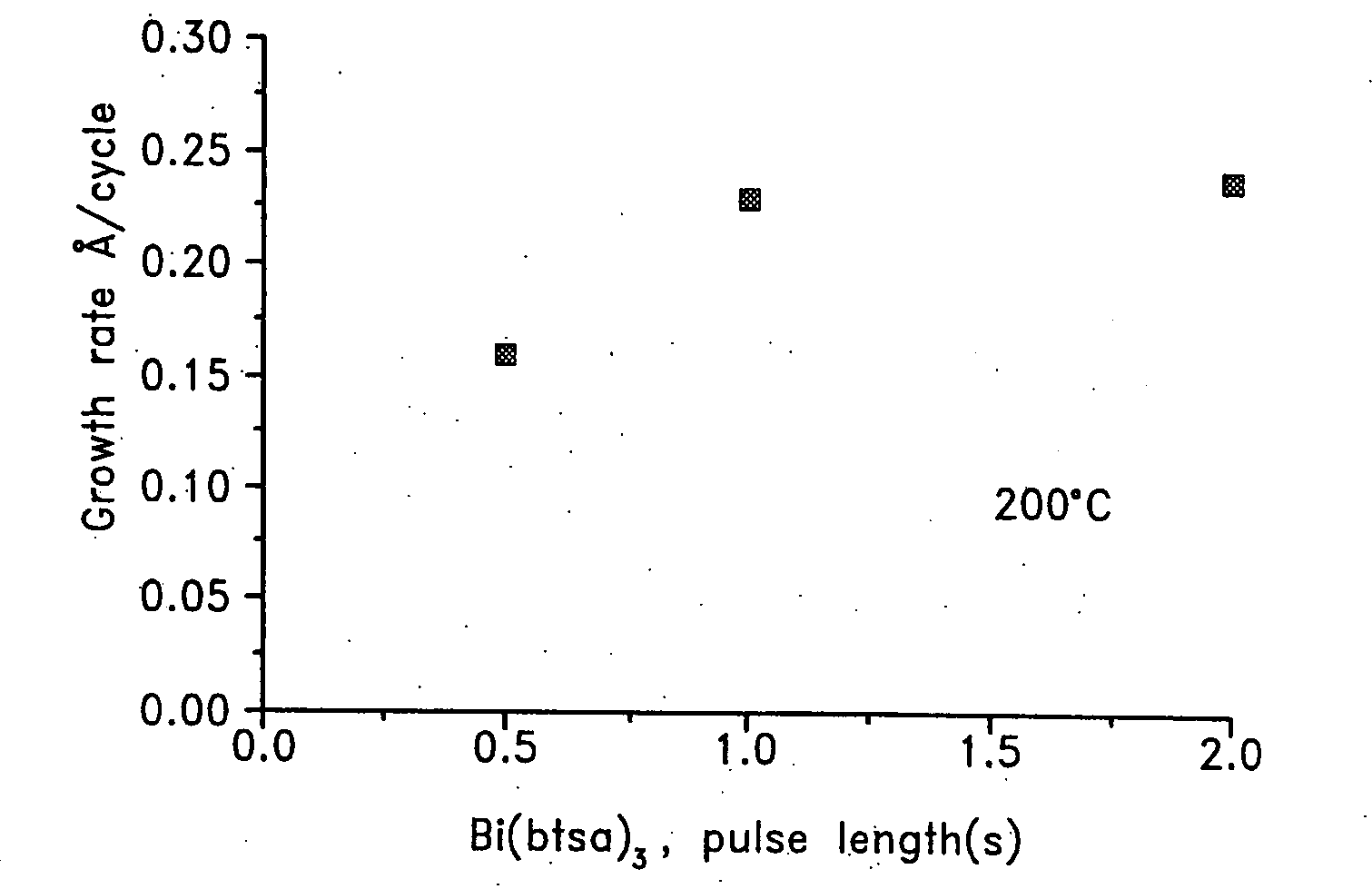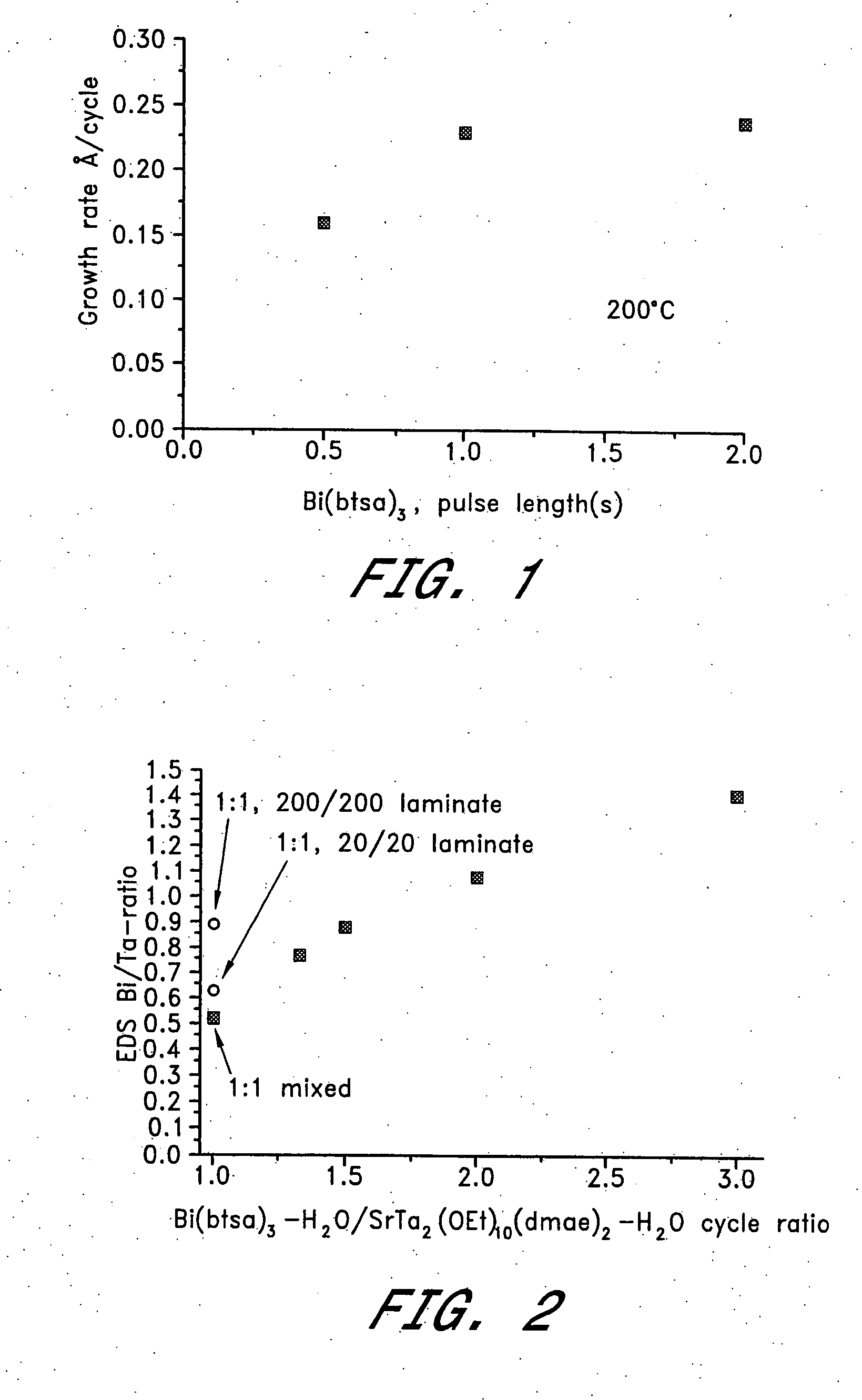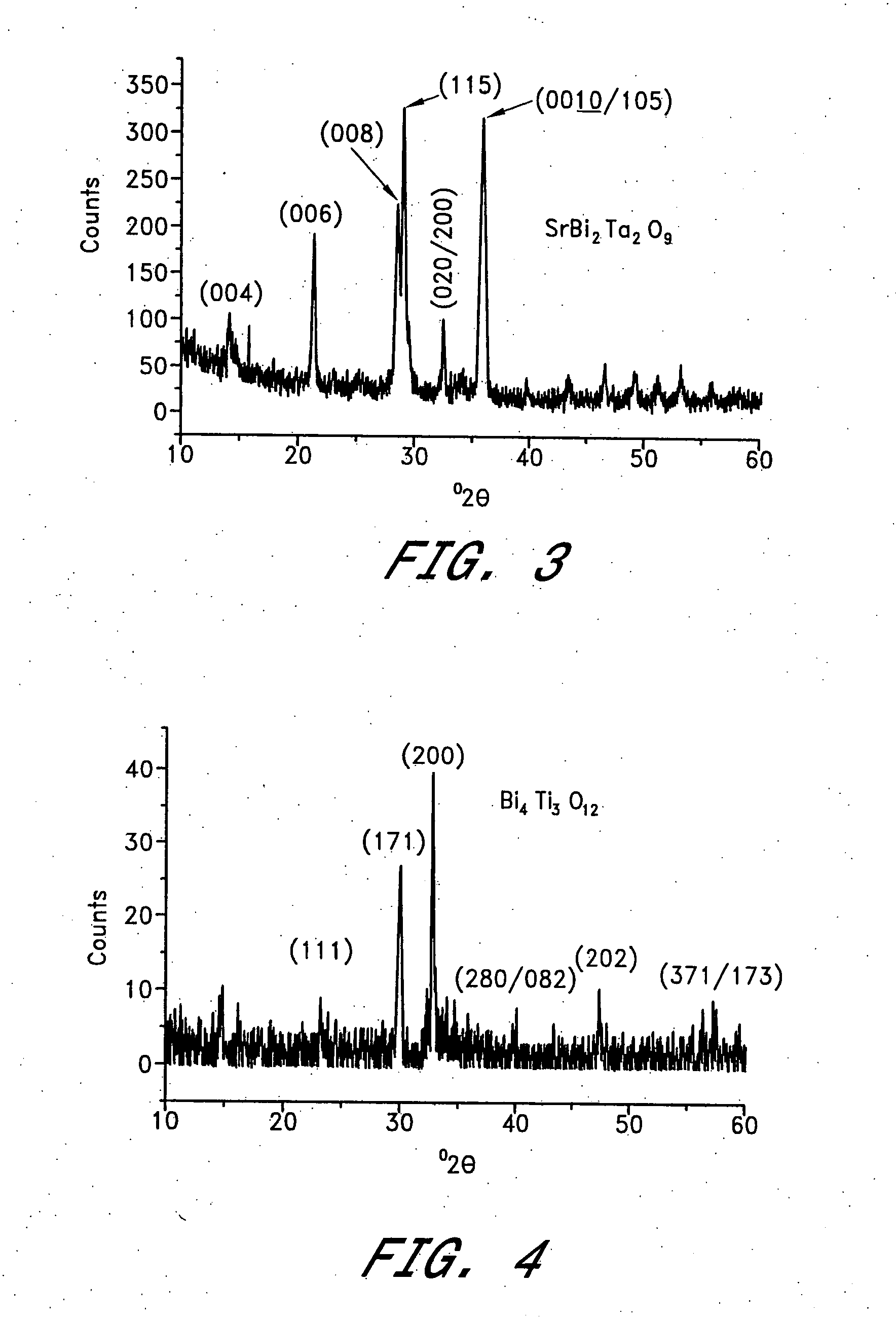Process for producing oxide films
a technology of oxide film and bismuth, which is applied in the manufacture of cables/conductors, ceramics, chemical vapor deposition coatings, etc., can solve the problems of not being able to achieve the desired bisub>, not having to find appropriate bismuth — oxygen source combinations, and not having to strictly control the substrate temperature and dosage control, etc., to achieve good thin film properties, excellent conformality, and excellent and automatic self-control of film growth
- Summary
- Abstract
- Description
- Claims
- Application Information
AI Technical Summary
Benefits of technology
Problems solved by technology
Method used
Image
Examples
example 1
[0064] ALD Growth of Bi2O3 from Bi(btsa)3 and H2O was carried out at temperatures in the range of from 150 to 200° C. At deposition temperatures of 225° C. and above, no significant growth was observed, probably due to precursor decomposition. At 200° C. the Bi—O growth rate saturates at 0.23 Å / cycle (FIG. 1).
example 2
[0065] SrBi2Ta2O9 films were deposited at 200° C. by mixing [Bi(btsa)3—H2O and [SrTa2(OEt)10(dmae)2—H2O] cycles (FIG. 2). Average growth rates were roughly 0.2 Å / cycle. At a 2:1 cycle mixing ratio, films were obtained having 8 atomic percentage Bi in excess of stoichiometric. This composition is suitable for ferroelectric applications.
example 3
[0066] A second approach was also used for depositing SrBi2Ta2O9. Thus, amorphous laminate layers of Sr—Ta—O and Bi—O were grown. In this case, the overall composition was adjusted by varying the thicknesses of these layers, and the desired compound was formed by reacting the layers with each other in the following annealing steps. All the as-deposited SBT films were amorphous, but after annealing in air at 750° C. the desired ferroelectric phase was observed (FIG. 3).
PUM
| Property | Measurement | Unit |
|---|---|---|
| temperature | aaaaa | aaaaa |
| temperatures | aaaaa | aaaaa |
| temperatures | aaaaa | aaaaa |
Abstract
Description
Claims
Application Information
 Login to View More
Login to View More - R&D
- Intellectual Property
- Life Sciences
- Materials
- Tech Scout
- Unparalleled Data Quality
- Higher Quality Content
- 60% Fewer Hallucinations
Browse by: Latest US Patents, China's latest patents, Technical Efficacy Thesaurus, Application Domain, Technology Topic, Popular Technical Reports.
© 2025 PatSnap. All rights reserved.Legal|Privacy policy|Modern Slavery Act Transparency Statement|Sitemap|About US| Contact US: help@patsnap.com



